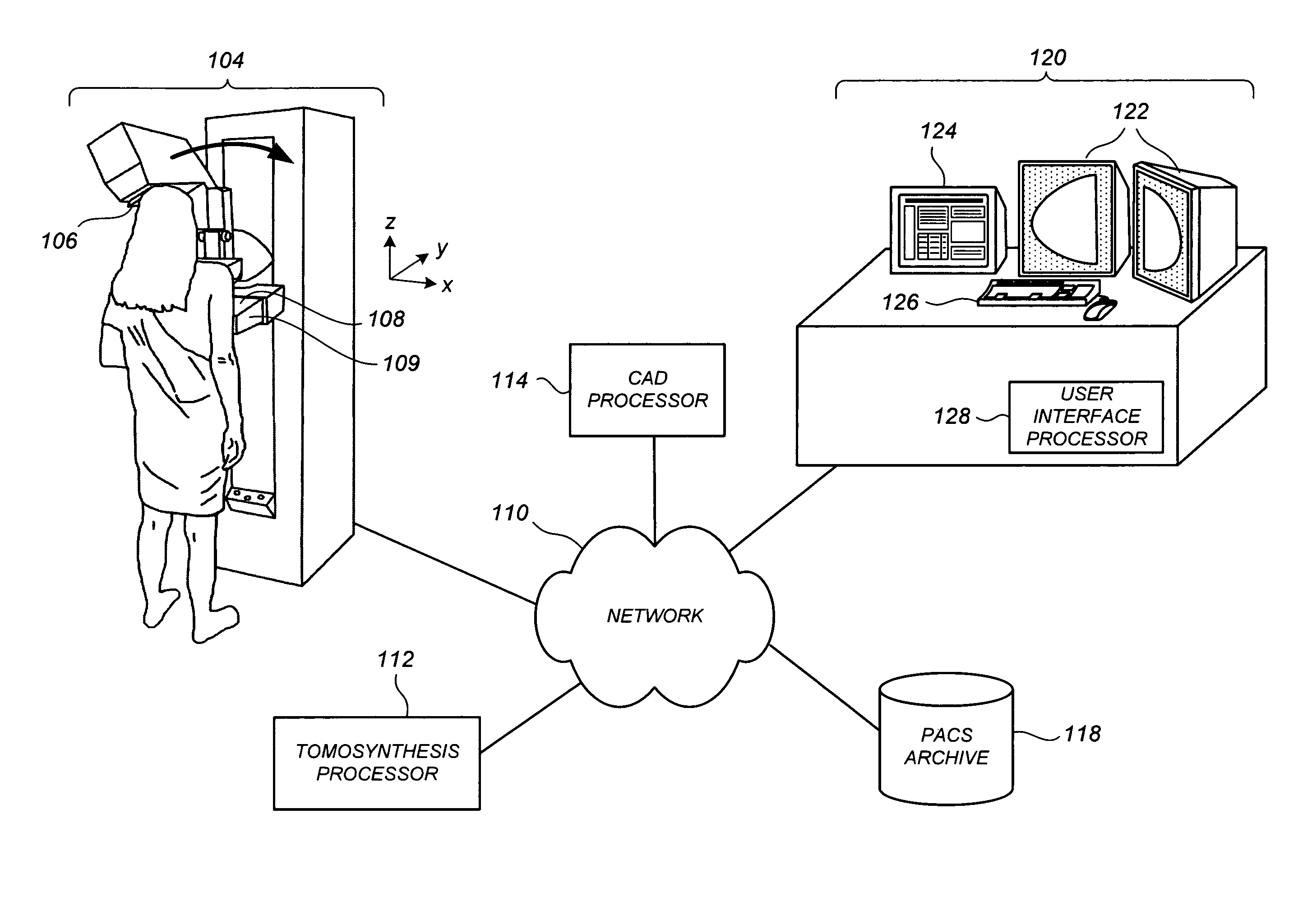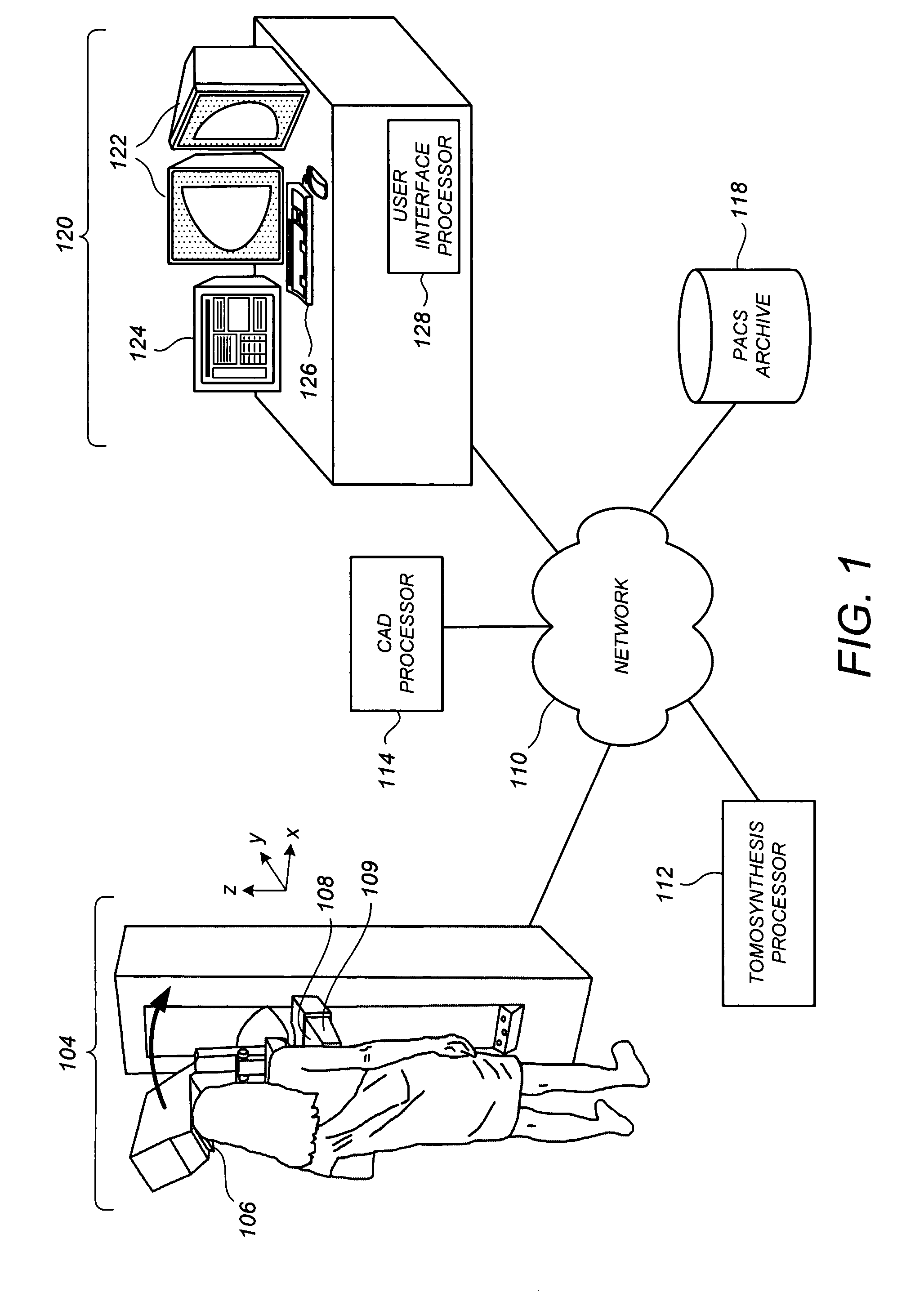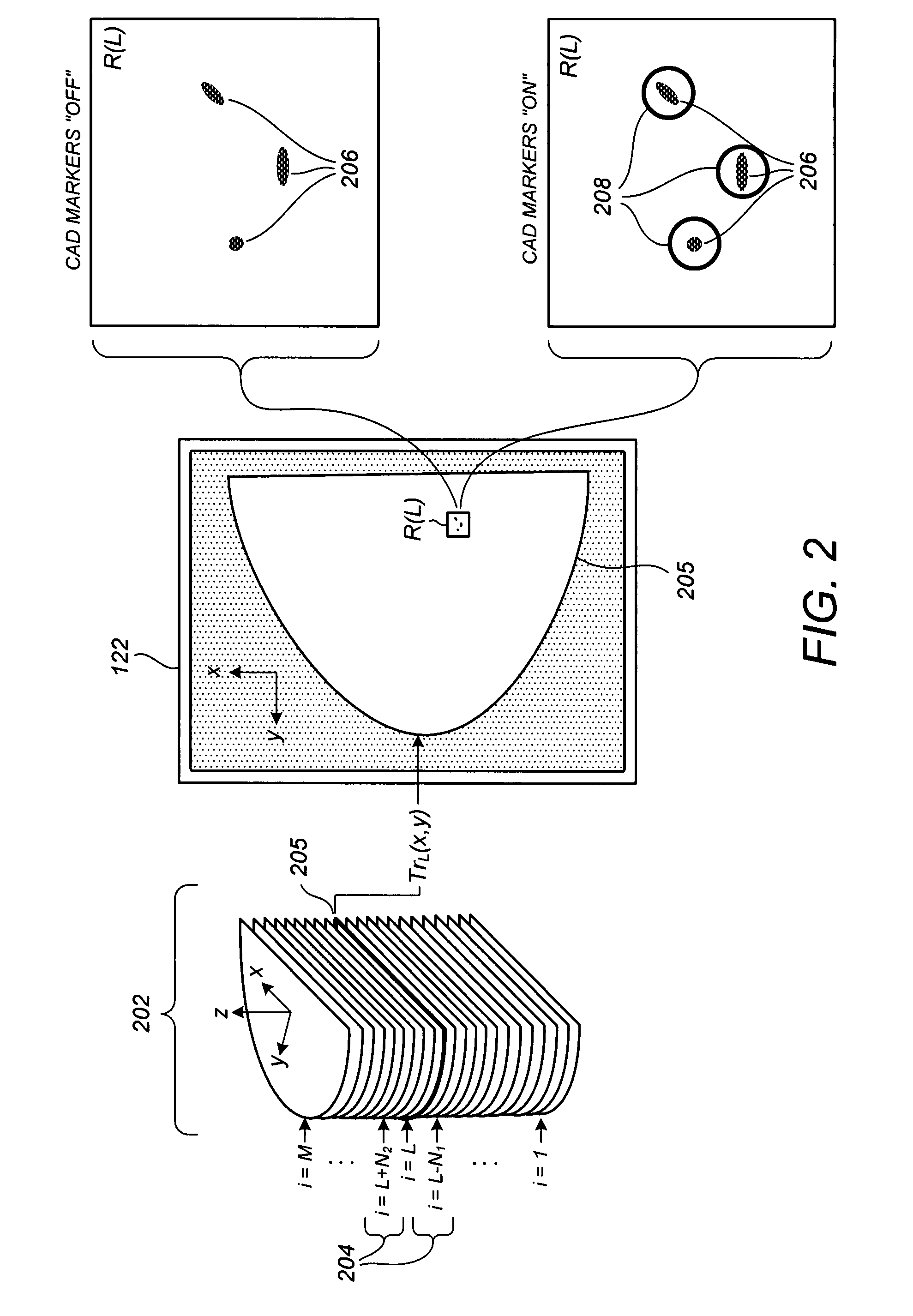Displaying breast tomosynthesis computer-aided detection results
a technology of breast tomosynthesis and computer-aided detection, which is applied in the direction of tomography, patient positioning for diagnostics, instruments, etc., can solve the problems of increasing the volume of data requiring radiologist review, and achieve the effect of increasing the likelihood
- Summary
- Abstract
- Description
- Claims
- Application Information
AI Technical Summary
Benefits of technology
Problems solved by technology
Method used
Image
Examples
Embodiment Construction
[0022]FIG. 1 illustrates a conceptual diagram of a medical imaging environment for which one or more of the preferred embodiments is particularly suited. Shown in FIG. 1 is a network 110, which may be a HIS / RIS (Hospital Information System / Radiology Information System) network, to which is coupled a breast x-ray tomosynthesis acquisition device 104, which can be dedicated for breast x-ray tomosynthesis or combined with conventional x-ray mammogram functionality. The acquisition device 104 includes an x-ray source 106 projecting x-rays toward a patient's breast that is supported on a breast platform 108. An x-ray imager 109 such as a flat panel, direct conversion imager available from Hologic, Inc. generates projection image data such as data defining images Mp and / or Tp. With respect to a three-dimensional coordinate system as illustrated in FIG. 1, in which an x-z plane corresponds at least roughly to a coronal plane of the patient and the y-direction extends outward from the patie...
PUM
 Login to View More
Login to View More Abstract
Description
Claims
Application Information
 Login to View More
Login to View More - R&D
- Intellectual Property
- Life Sciences
- Materials
- Tech Scout
- Unparalleled Data Quality
- Higher Quality Content
- 60% Fewer Hallucinations
Browse by: Latest US Patents, China's latest patents, Technical Efficacy Thesaurus, Application Domain, Technology Topic, Popular Technical Reports.
© 2025 PatSnap. All rights reserved.Legal|Privacy policy|Modern Slavery Act Transparency Statement|Sitemap|About US| Contact US: help@patsnap.com



